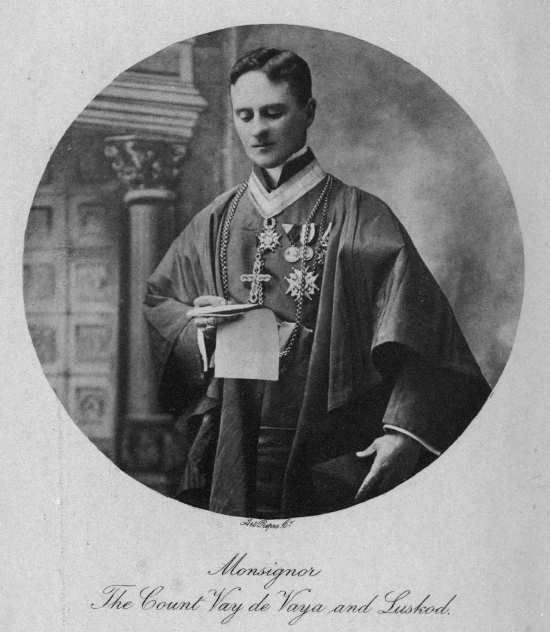EMPIRES AND EMPERORS
OF RUSSIA, CHINA,
KOREA, AND JAPAN
NOTES AND RECOLLECTIONS
BY MONSIGNOR
COUNT VAY DE VAYA AND LUSKOD
WITH ILLUSTRATIONS
NEW YORK
E. P. DUTTON AND COMPANY
1906

PREFACE
[Page v]
As the name of the author of this book maynot be so well known to some Englishreaders as it is on the Continent, I have, at hisrequest, undertaken to write a few lines ofintroduction and preface.
Count Vay de Vaya and Luskod is a memberof one of the oldest and most distinguishedfamilies of Hungary. Ever since his ancestortook part with King Stephen in the foundationof the Hungarian Kingdom, nine hundred yearsago, the members of his family, in succeedinggenerations, have been eminent in the serviceof that state.
The Count studied at various European universities,and was destined for the diplomaticservice, but early in life he decided to takeHoly Orders and devote himself to the workof the Church.
In this capacity he attended the DiamondJubilee of Queen Victoria in 1897 as one of theenvoys of Pope Leo XIII.
The chief enterprise of his life, however, hasbeen to study the work of the Roman Catholic[vi]Church in all parts of the world—her missions,charitable institutions, schools, and organizationsof all kinds.
Few men have travelled so far and into suchremote quarters as the Count Vay de Vaya has,with this object. His position has secured forhim access to the leading and most accomplishedcircles wherever he has been, and his linguisticattainments, as well as his wide personal experienceof men and affairs in every quarterof the globe, give him an almost unique opportunityof describing and commenting on thecountries which he has visited—their people,rulers, and institutions.
Seldom has any region been subjected tosuch complete and revolutionary changes ashave the countries which he describes in thefollowing pages.
Russia has been compelled to relax that gripon the Far East which seemed to be permanentlytightening and closing: at home she has beensubjected to a social upheaval which at one timethreatened the existing form of governmentand the throne itself. And for the first timewe have witnessed the triumph of an Asiaticrace over one of the leading Powers of Europe.
The substance of this volume was writtenin 1902 and the following year, before any ofthese events had occurred, or were dreamed of,and this may cause some of the details of the[vii]record to be a little out of date historically;but the change, far from diminishing, has, onthe whole, probably increased its value to allthoughtful readers.
A few passages of comment and forecasthave been added since the occurrence of thewar, but in the main the narrative remains asit was originally written.
Japan, Korea, Manchuria, and the SiberianRailway have been described over and overagain, both during and since the war, but descriptionsof them on the eve of the outbreak maycome with some freshness and enable readersto compare what was yesterday with what istoday.
And what has been changed in the "UnchangingEast" bears but a very small proportionto what remains the same in spite of wars andrevolutions.
I hope, therefore, that these first impressionsof countries which, in name at any rate, arefar more familiar to the British public than theywere four or five yea